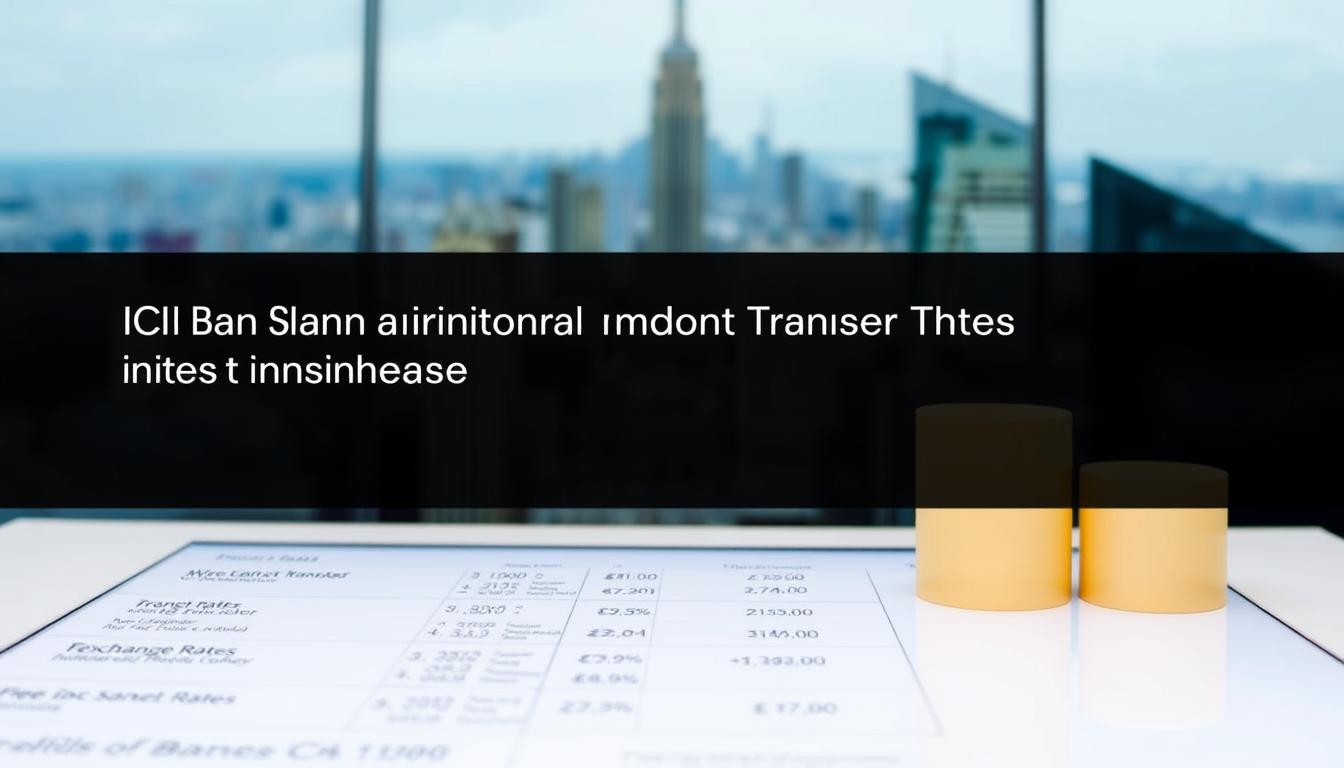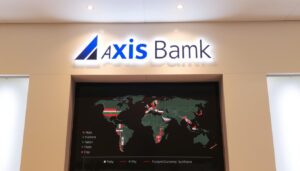Did you know that over $100 billion is sent globally in remittances each year? With such a massive scale, understanding the costs involved in sending funds abroad is crucial. For those using ICICI Bank, navigating the fee structure for outward remittances can help save significant amounts.
ICICI Bank is a prominent player in the remittance space, offering services like Money2World for seamless transfers in multiple currencies. However, fees can vary widely, from 0.5% to 3% of the transaction value, plus an 18% GST on service charges. Knowing these details can empower users to make informed decisions.
Whether you’re sending funds for education, travel, or business, understanding the regulatory framework, such as the Liberalized Remittance Scheme (LRS) limits, is essential. Additionally, exploring digital solutions like Karbon can provide competitive rates and innovative features to optimize costs.
Key Takeaways
- ICICI Bank offers dual-channel access for international transfers: online and in-branch.
- Fees for currency conversion range from 0.5% to 3% of the transaction value.
- An 18% GST is applied to service charges for forex transactions.
- Understanding LRS limits and comparative banking fees can help reduce costs.
- Alternative platforms like Karbon provide competitive rates and streamlined processes.
Overview of ICICI Bank’s International Money Transfer Services
Sending funds across borders has become a seamless process with modern banking solutions. ICICI offers robust services to facilitate wire transfers and outward remittance, ensuring secure and efficient transactions. Whether you’re supporting family abroad or managing business payments, understanding these services can save time and money.
How ICICI Bank Facilitates International Transfers
ICICI provides multiple channels to send money internationally. Customers can choose between visiting a branch, using the iMobile Pay app, or accessing internet banking. Each option caters to different needs, offering flexibility and convenience.
Real-time processing ensures timely transfers, with a cut-off time of 3 PM IST for same-day transactions. Documentation requirements vary based on the purpose of the transfer, such as education, travel, or business payments.
Supported Currencies and Destinations
ICICI supports a wide range of foreign currency transactions, including USD to the USA, GBP to the UK, and EUR to the Eurozone. This extensive network ensures that funds reach their destination quickly and securely.
Transparency in currency conversion rates is a priority, allowing customers to make informed decisions. Whether you’re dealing with major or minor currencies, ICICI ensures competitive rates and minimal hidden fees.
Understanding ICICI Bank Charges for International Money Transfers
Managing costs when sending funds abroad is essential for financial planning. The fee structure for outward remittances varies based on the amount and destination. By understanding these costs, you can make informed decisions and avoid unnecessary expenses.
Fee Structure for Outward Remittances
The fees are tiered, depending on the transaction value. For transfers up to $500, the base fee is ₹500 plus taxes. For amounts exceeding $500, the fee increases to ₹1000 plus taxes. This structure ensures transparency and helps users calculate costs upfront.
Additionally, correspondent bank charges may apply, ranging from ₹500 to ₹1000, depending on the currency pair. These fees are often overlooked but can significantly impact the total cost of the transaction.
Additional Charges and Taxes
An 18% GST is applied to all transaction fees, adding to the overall cost. Hidden expenses, such as intermediary bank deductions in beneficiary countries, can also affect the final amount received. For example, sending $1,000 may incur lower fees compared to a $10,000 transfer due to the tiered structure.
- Detailed fee matrix: Costs vary based on the transfer amount and destination.
- Correspondent bank charges: ₹500-1000 depending on the currency pair.
- Tax components: 18% GST on transaction fees.
- Hidden costs: Intermediary bank deductions in beneficiary countries.
- Case studies: Comparing total costs for $1,000 vs $10,000 transfers.
By understanding these charges, you can better plan your service and ensure that your funds reach their destination efficiently. Whether you’re sending USD or another currency, being aware of the costs involved can help you save money per transaction.
Comparing ICICI Bank’s Fees with Other Banks
When it comes to sending funds abroad, comparing fees across different institutions can lead to significant savings. Each bank has its own fee structure, and understanding these differences can help you choose the most cost-effective option for your needs.
DBS Bank and IDFC FIRST Bank Fee Comparison
DBS offers a unique advantage with fee-free transfers to seven major corridors, making it an attractive option for frequent senders. This feature is particularly beneficial for businesses that operate across multiple countries.
IDFC FIRST, on the other hand, boasts a zero-fee structure for outward remittances, excluding correspondent bank account charges. This can result in substantial savings, especially for larger transactions.
- Fee-free corridors: DBS Treasures accounts offer no fees for select destinations.
- Zero-fee structure: IDFC FIRST eliminates base fees but may incur correspondent charges.
- Corporate vs individual: Fee differentials exist based on account type.
SBI’s Outward Remittance Charges
State Bank of India (SBI) employs a three-tier charge model: Beneficiary, Remitter, and Guaranteed. Fees range from ₹10 to ₹18, plus correspondent bank charges, depending on the destination country.
This model provides flexibility but may not always be the most economical choice for smaller transfers. However, SBI’s extensive network ensures reliability and accessibility.
- Beneficiary model: Charges are borne by the recipient.
- Remitter model: Sender covers all fees.
- Guaranteed model: Fixed fees for both parties.
By comparing these options, you can identify the best rate and fee structure for your specific needs. Whether you’re managing business payments or personal remittances, a detailed analysis can lead to significant cost savings.
How to Minimize Costs on International Money Transfers
Optimizing costs when sending funds overseas requires strategic planning and awareness of available options. Whether you’re supporting family abroad or managing business payments, reducing fees can lead to significant savings. Below, we explore practical tips and alternative solutions to help you achieve this goal.
Tips to Reduce Transfer Fees
One effective way to save on money transfer costs is by batching transactions. This approach maximizes the Liberalized Remittance Scheme (LRS) limits, reducing the number of transfers and associated fees. Timing also plays a crucial role—sending funds during periods of favorable exchange rates can lower conversion costs.
For NRIs, using an NRO account can streamline transactions and minimize fees. High-volume transactors may also benefit from preferential pricing, which many institutions offer to frequent users. Additionally, combining traditional bank transfers with fintech services can create a hybrid solution that optimizes costs.
Exploring Alternative Solutions
Third-party platforms like Karbon FX provide competitive rates and streamlined processes for transfer abroad. These platforms often have lower fees and faster processing times compared to traditional methods. By leveraging such alternatives, users can achieve significant savings while maintaining efficiency.
As the financial landscape evolves, staying informed about innovative solutions is key. Whether through batch transfers, optimal timing, or alternative platforms, minimizing costs is achievable with the right strategies.
Navigating ICICI Bank’s Online and Mobile Transfer Options
The rise of mobile and online banking has made global transfers more accessible than ever. With tools like the iMobile Pay app and bank internet banking, sending funds internationally is now faster and more convenient. These platforms offer a seamless experience, ensuring your transactions are secure and efficient.
Using iMobile Pay App for International Transfers
The iMobile Pay app is a powerful tool for managing cross-border payments. With a daily limit of ₹1-10,000, it caters to both small and large transactions. Domestic transfers are processed 24/7, while international transfers have a cutoff time of 3 PM IST for same-day processing.
Security is a top priority, with features like OTP authentication and biometric verification. The app also includes an auto-save feature for frequent beneficiaries, saving you time on repetitive entries. In case of errors, the app provides clear resolution protocols to ensure smooth transactions.
Internet Banking for Outward Remittances
For those who prefer a desktop experience, bank internet banking offers a reliable option. It supports a wide range of currencies and destinations, making it ideal for diverse needs. The platform provides detailed instructions for each step, from currency selection to beneficiary details.
Key features include real-time tracking and transparent fee structures. Whether you’re sending funds for education, travel, or business, this platform ensures your transactions are handled efficiently. With robust security measures, you can trust your funds are in safe hands.
- Step-by-step guidance: Clear instructions for app-based and online transfers.
- Security protocols: OTP and biometric verification for added safety.
- Error resolution: Quick fixes for failed transactions.
- Auto-save features: Save beneficiary details for future use.
Regulations and Limits on International Money Transfers
Understanding the rules around sending funds abroad can save you from unexpected costs. The Reserve Bank of India (RBI) and the Liberalized Remittance Scheme (LRS) set clear guidelines to ensure compliance and transparency. These regulations help individuals and businesses navigate the complexities of cross-border payments.
RBI Guidelines and LRS Limits
The LRS allows individuals to send up to $250,000 per financial year for eligible purposes. These include education, medical expenses, and investments. However, exceeding this limit requires special approval from the RBI.
Documentation is crucial for compliance. For example, proof of property sale or gift deeds may be required depending on the purpose of the remittance. Recent updates in the 2023-24 fiscal year have introduced stricter reporting requirements to curb misuse.
- LRS-eligible purposes: Education, travel, medical treatment, and investments.
- Documentation matrix: Gift deeds, property sale proofs, and medical invoices.
- Audit triggers: Frequent remitters may face scrutiny under Section 206C(1G).
Income Tax Implications on Remittances
Tax Collected at Source (TCS) applies to outward remittances, ranging from 5% to 20% based on the purpose. For instance, educational expenses attract a lower TCS rate compared to investments. This tax is deducted at the time of the transaction and must be factored into your financial planning.
“Understanding TCS under Section 206C(1G) is essential to avoid surprises during tax filing.”
Frequent remitters should maintain detailed records to avoid audit triggers. Staying updated on recent regulatory changes ensures compliance and minimizes risks.
- TCS rates: 5% for education, 20% for investments.
- Record-keeping: Maintain invoices and transaction details.
- Recent changes: Stricter reporting for high-value transactions.
Conclusion
Navigating the complexities of cross-border payments requires a clear understanding of costs and options. By leveraging digital tools, users can access better rates and streamline processes. ICICI Bank offers robust solutions for those looking to send money efficiently, especially for business needs.
Understanding fee structures, including those for foreign currency conversions, is essential for cost optimization. Regulatory compliance, such as adhering to LRS limits, ensures smooth transactions. As the financial landscape evolves, staying informed about trends will help users make smarter decisions.
In summary, combining digital adoption with a clear grasp of costs and regulations empowers users to manage cross-border payments effectively. The future of remittances lies in innovation and transparency, offering even greater convenience and savings.







